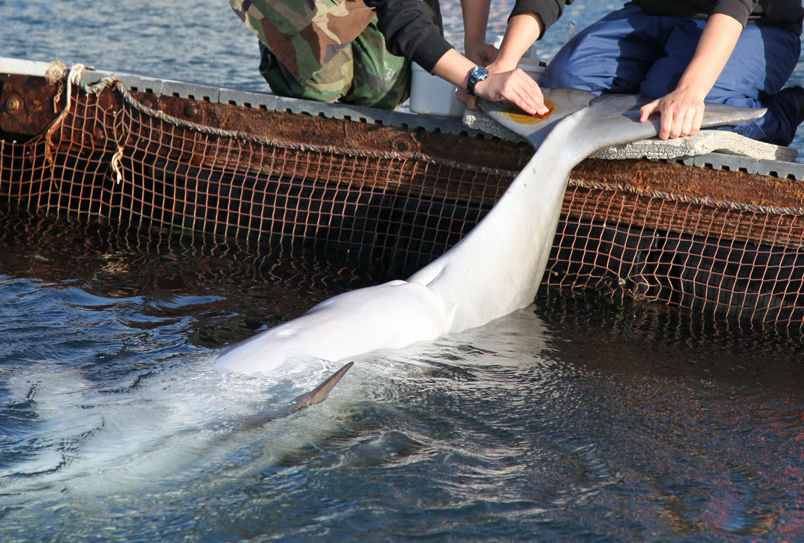Persistent Pollutants from Mother’s Milk Turn Dolphin Calves More Toxic Than Mom
Posted
Last Updated
May raise concerns for killer whales that are closely related.
When bottlenose dolphins nurse their young, they transfer toxic pollutants such as polychlorinated biphenyls (PCBs) and DDT to their calves through their milk. New research shows that the calves end up with higher concentrations of the toxins than their mothers.
The level of total PCBs measured in two of the three dolphin calves studied are known to cause health problems in other species, the research found. The concentrations can rise especially high in the first-born calf of female dolphins since their milk carries toxins that accumulated in their blubber throughout their lives.
“The newborns are getting the highest concentrations soon after birth, at the time when they are most vulnerable,” said Dawn Noren, a research fishery biologist at NOAA Fisheries’ Northwest Fisheries Science Center and lead author of the new study published in Science of the Total Environment. “Mammals are still developing neurologically after birth, so high exposure early on is a huge concern.”
Toxins such as PCBs, DDT, and flame retardants are known as persistent organic pollutants because they spread through the environment and break down very slowly. That allows them to collect over time in wildlife, where they associate with fat stores.
Read more at fisheries.noaa.gov.


